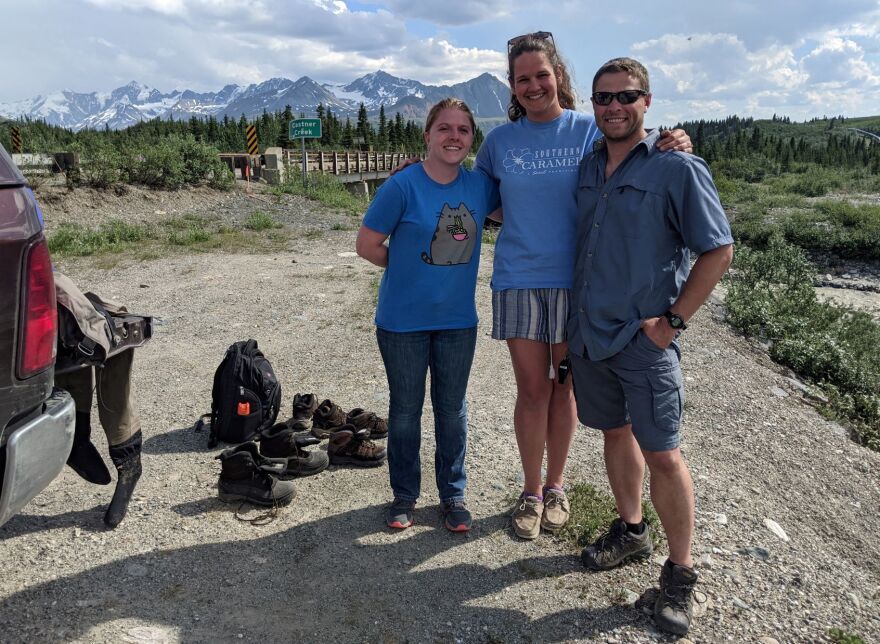Experts urge ice cave visitors to be careful near opening — and discourage trying to cross Castner Creek
The Castner Glacier ice cave off the Richardson Highway near Black Rapids attracts some says 8,000 people annually. But federal officials and a University of Alaska professor are advising hikers to be careful around the ice cave, because it’s gushing meltwater and slowly collapsing.

Chuck and Allison Hohnbaum drove down from North Pole on a hot and sunny day last week to take the 45-minute hike up to terminus of the Castner Glacier and check out the ice cave there.
“Been here a couple of times in the winter, where you can walk into the cave,” Chuck said, “and we figured we’d try it during the summer.”
Hohnbaum and his wife, Allison, and sister, April, parked their rig along with about a dozen others at a pulloff at the Richardson Highway bridge over the meltwater-swollen Castner Creek at milepost 217. They said they hadn’t heard there’s a torrent of water several feet deep running through the cave, and that it’s slowly collapsing. But Allison says that didn’t discourage them.
“No, we’re super-stoked!” she said. “This will be kind of cool seeing it with the river gushing out of it.”

It is indeed gushing out of the roughly 10- by-20-foot opening at the mouth of the cave, and it’s ejecting rocks and chunks of ice, some as big as a washing machine before they’re carried downstream and melt. That’s why the federal Bureau of Land Management has posted signs on the trail leading to the glacier urging hikers to be careful when approaching the ice cave.
“You can still hike and see the Castner Glacier. The area is not closed,” says Scott Claggett is a spokesperson for the federal Bureau of Land Management. “We just want to make sure that people are aware and are being safe."
Claggett says this year’s surge of runoff and meltwater is the heaviest in recent memory. And that’s why a snow and ice expert with the University of Alaska Fairbanks is urging caution for those who hike to the cave, especially if they want to take a look inside.
“People should be very aware that any tunnel in ice is temporary and there’s potential danger in it collapsing or having rocks that are in the ice above collapsing,” says Matthew Sturm, a geophysics professor with the UAF’s Geophysical Institute who heads up its Snow, Ice and Permafrost Group.

Sturm says meltwater created the ice cave, and now it’s causing it to collapse.
“Water that enters the glacier on the sides and above tends to want to work underneath the glacier at the bottom to get into a single channel,” he said in an interview last week. “And it emerges from the tip of the glacier, the terminus, leaving a tunnel.”
Sturm says that dynamic process is ongoing in all Alaskan glaciers, especially those in the eastern Alaska Range, all of which are melting and receding. He says that so-called “down-wasting” is being accelerated by the warming climate and unusually warm summer weather. But he says the gravelly material the glacier has piled up onto its terminus helps slow the melt.
“All of the glaciers that I know of in the Alaska Range have this debris in the lower end,” he said, “and that actually is saving them from the worst of climate change, because it serves as a protector and insulator against these warmer temperatures.”
Sturm also discourages those who trek up to the glacier from crossing Castner Creek, both because of the heavy flow and because of the ice chunks and other debris it’s carrying.



